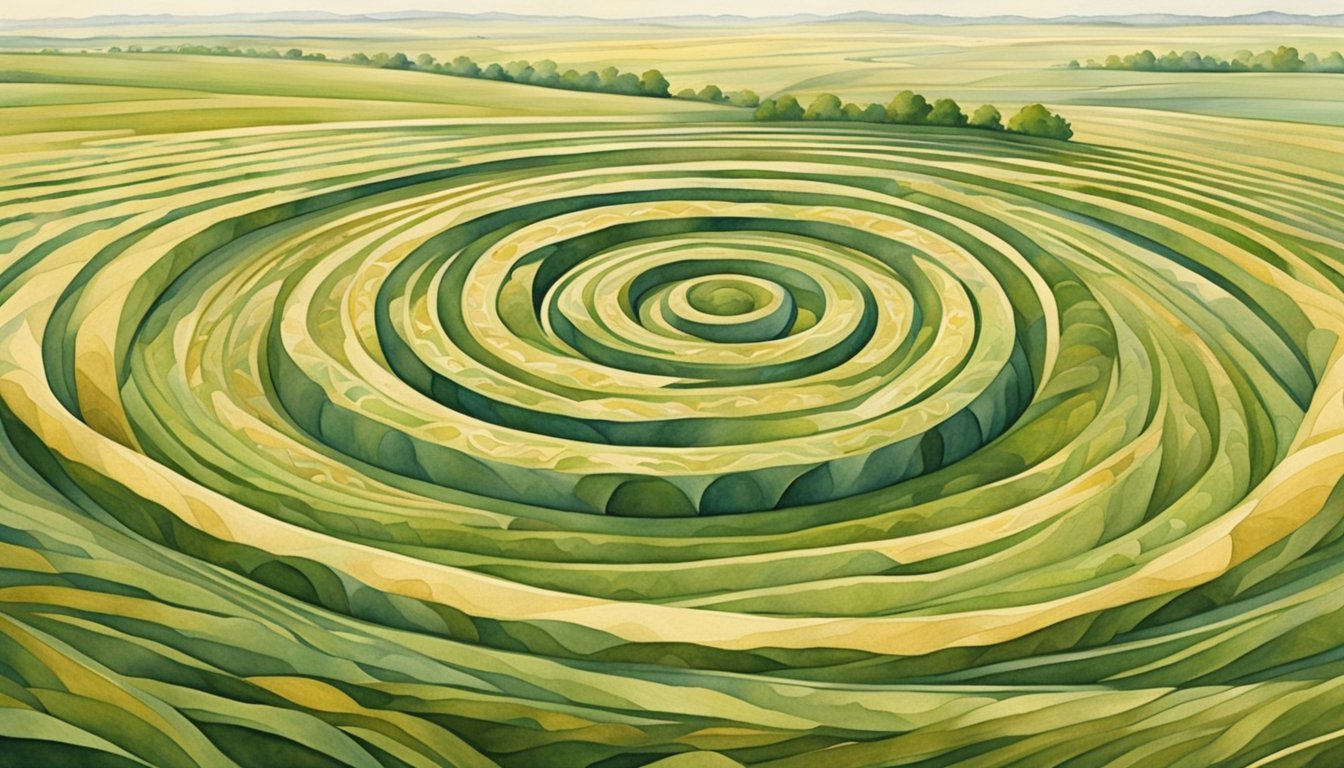Understanding Crop Circles
Crop circles are intricate patterns that appear mysteriously overnight in farmers’ fields, predominantly those with cereal crops like wheat. They range from simple circles to complex geometrical formations, drawing significant attention and sparking curiosity worldwide. While some believe these formations are the result of natural phenomena or human artistry, others speculate about extraterrestrial involvement. Interestingly, certain patterns resemble the circular shapes created by a center pivot irrigation system, leading to occasional confusion. Despite various theories, the true origin of many crop circles remains a topic of debate and fascination.
Historical Context
The phenomenon of crop circles dates back centuries, with some of the earliest recorded occurrences appearing in Southern England, an area renowned for its rich history and connection to folklore. One of the oldest documented examples is the “Mowing Devil” case of 1678 in Hertfordshire, England, where a woodcut pamphlet depicts a devil creating a circular design in a crop field. Fast forward to more contemporary times, and the regions of Wiltshire, home to the iconic Stonehenge, and Avebury, have become hotspots for crop circle appearances.
Formation Theories
Explanations for the creation of crop circles range widely. Some attribute the patterns to natural phenomena or human activities, while others propose more exotic origins. At one point, UFO landings were a popular theory, giving rise to the term “saucer nests.” On the terrestrial side, in 1966 a farmer in Tully, Queensland, claimed to witness a UFO rise from a swamp before finding a crop circle, which some then suggested might be evidence of alien visitation. Yet, the prevailing theory accepted by many scientists is that the majority of crop circles are man-made, often intricate hoaxes, with the first modern patterns created by hoaxers Doug Bower and Dave Chorley in Gloucestershire in the 1970s.
Scientific Perspectives
The scientific community generally approaches crop circles with skepticism. Physicists and agronomists studying the phenomena note that the plants within the circles are often bent at the nodes, not broken, indicating they were flattened while still alive. Nonetheless, extensive research, including that referenced by HowStuffWorks, aligns with the theory of human creation, using simple tools like planks, ropes, and bar stools. Despite the scientific evidence, crop circles continue to captivate the imagination, weaving themselves into the cultural and mystical tapestry of regions like Wiltshire and compelling onlookers to explore the intricate beauty and mystery behind each formation.
Media and Artistry of Crop Circles

The phenomenon of crop circles has fascinated the general public with its mix of intricate designs and mysterious origins, playing a notable role in the media and arts. The distinct aesthetics of these formations have served not only to intrigue viewers but also to inspire artists and storytellers.
Photography and Representation
Crop circles have become a favorite subject for photographers due to their intriguing designs and the challenge they pose in representation. High-quality images of these formations are often shared across various platforms, ranging from social media to specialized paranormal websites. Photographers may employ different file formats like JPEG or PNG to ensure that the intricate patterns and contrasts of the crop circles are effectively captured. These photographs help to both document and popularize the phenomenon, often elevating crop circles to a form of temporary art.
Creation and Tools
The creation of crop circles is often attributed to the ingenuity of humans rather than extraterrestrial influences. Individuals like Doug Bower and Dave Chorley, known as the originators of modern crop circles, used simple tools like planks, ropes, and a willingness to work under the cover of darkness. This man-made craft of “circle cropping” involves intricate planning and execution, with the creators often leaving no trace of their activity. Technology advancements have allowed for more complex designs to be crafted, with tools such as Canva providing templates for visualizing intricate patterns before their physical creation.
Cultural Impact and Communication
The cultural impact of crop circles extends far beyond their mysterious allure; they have been interpreted as messages from extraterrestrial beings, as elaborate hoaxes, or as a form of social commentary. Figures like Joe Nickell and Colin Andrews have delved into the scientific research behind these formations, fostering a community of devotees and skeptics alike. The crop circle phenomena have inspired a multitude of interpretations, ranging from connections to UFO sightings to being dismissed as mere attention-seeking hoaxes. Regardless of their origin, the representation of crop circles in various media has fueled a dialogue about the intersection of art, science, and the unknown.

